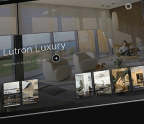





There are a variety of ways of controlling a smart home. Some of the most common methods involve using individual smart phone apps provided by manufacturers, an integrated app that ties together smart devices, handheld remote controls, dedicated touch panels, wallmounted keypads, or voice control. All of these options have their advantages and disadvantages, but I was convinced that I could find an alternative user interface for my smart home, which is how this article came together.
I really like wireless keypads and use them in my own home. Battery-operated models are great to place on a nightstand, table, desk, work bench, etc. and programmed to perform a few dedicated functions.
For example, Shelly makes a basic single-button Wi-Fi keypad, called the Shelly Button 1. It is rechargeable, so you never have to worry about not having the correct battery on hand if it runs out of power, and it can be integrated with a wide variety of smart home platforms. I’ve even written a driver to integrate Shelly devices with a Crestron smart home system. The Shelly Button 1 can report a single press, double press, triple press, and press-hold events, enabling it to perform four






